Cheat Sheet: How do Organisms Reproduce | Science Class 10 PDF Download
Why Reproduce?
- Purpose: Reproduction is not essential for individual survival but ensures species continuity by creating new individuals that resemble parents.
- Significance: Large populations make species noticeable; reproduction maintains population size and allows adaptation through variations.
- Species Identification: Organisms of the same species look similar due to shared body designs and DNA.
Do Organisms Create Exact Copies?
- DNA Copying: Reproduction involves creating DNA copies (blueprints for body design) via chemical reactions, followed by cell division to form two cells.
- Process: DNA replication creates two copies, each needing cellular apparatus to function; cell divides to separate them.
- Variation: DNA copying is not perfectly accurate, leading to variations. Most are minor, but some may cause cell death. Variations are the basis for evolution.
- Importance of Variation:
- Ensures species survival in changing environments (e.g., heat-resistant bacteria survive global warming).
- Maintains body design for niche-specific survival but allows adaptation.
Modes of Asexual Reproduction
New individuals form from a single parent, producing genetically similar offspring.
Modes of Asexual Reproduction
Binary Fission: Unicellular organisms (e.g., Amoeba) split into two equal parts.
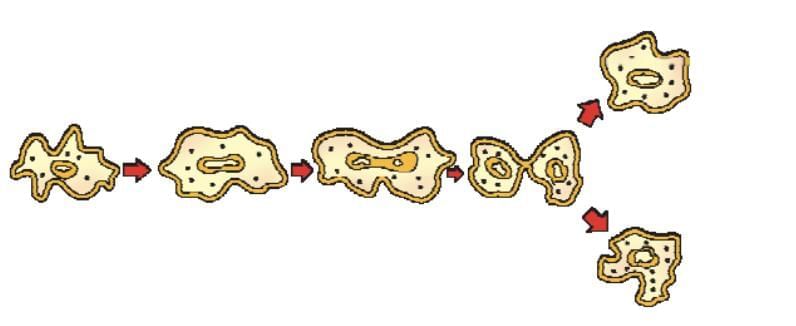
Multiple Fission: Organisms (e.g., Plasmodium) divide into many daughter cells.
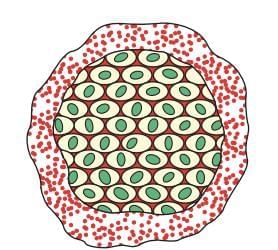
Fragmentation: Multicellular organisms (e.g., Spirogyra) break into fragments, each growing into a new individual.
Regeneration: Organisms (e.g., Hydra, Planaria) regrow from body parts via specialized cells; not equivalent to reproduction.
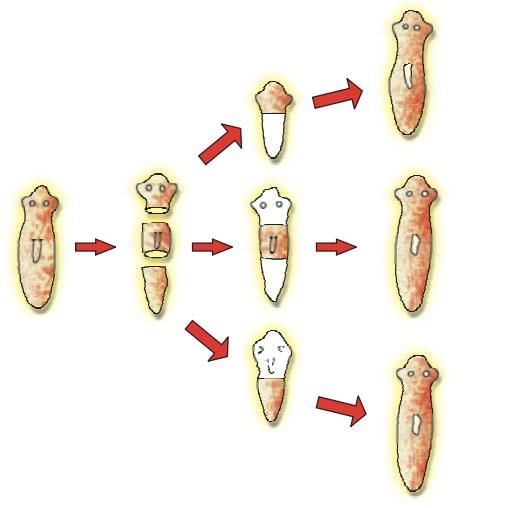
Budding: Outgrowths (buds) form on parent (e.g., Hydra, yeast), detach to become new individuals.
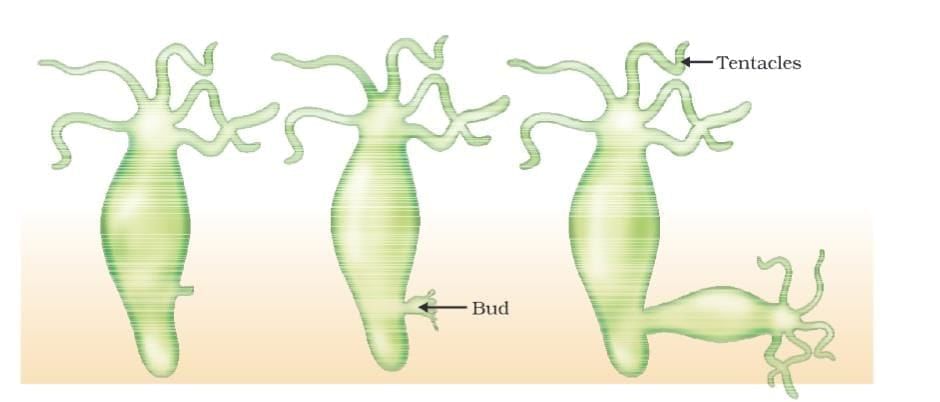
Vegetative Propagation: Plants use roots, stems, or leaves to form new plants (e.g., Bryophyllum leaf buds, potato eyes).
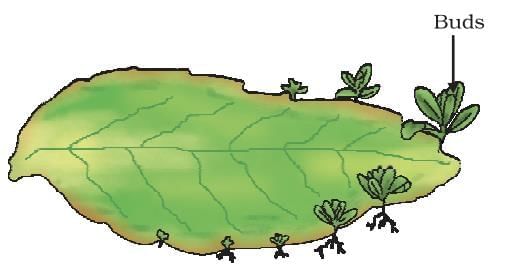
Spore Formation: Spores in sporangia (e.g., Rhizopus) develop into new individuals under suitable conditions.
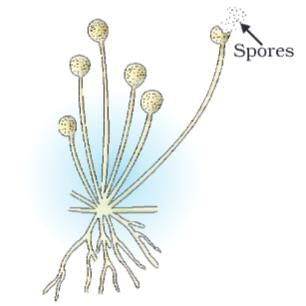
Tissue Culture: Cells from plant tips grow into callus, then plantlets in artificial medium; used for ornamental plants.
Limitations of Asexual Reproduction
Less variation, limiting adaptability to environmental changes.
Sexual Reproduction
Involves two individuals (male and female) combining germ-cells (gametes) to form a zygote.
Significance
Combines DNA from two individuals, increasing variation for species survival.
Variations accumulate from both parents, creating novel combinations.
Gametes
Male Gamete: Small, motile (e.g., sperm).
Female Gamete: Large, contains food reserves (e.g., egg).
Sexual Reproduction in Flowering Plants
1. Reproductive Parts
Stamen (Male): Produces pollen grains (male germ-cells).
Pistil (Female): Consists of ovary (contains ovules with egg cells), style, stigma.
Sepals/Petals: Protect flower, attract pollinators.
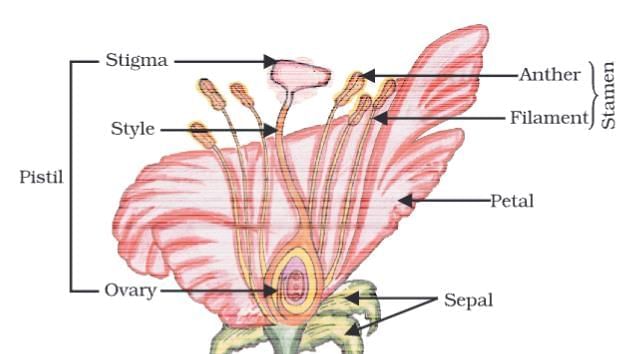
2. Flower Types
Unisexual: Either stamen or pistil (e.g., papaya, watermelon).
Bisexual: Both stamen and pistil (e.g., Hibiscus, mustard).
3. Process
Pollination: Transfer of pollen from stamen to stigma.
Self-Pollination: Within same flower.
Cross-Pollination: Between different flowers, via wind, water, animals.
Fertilization: Pollen tube grows through style to ovary; male germ-cell fuses with egg to form zygote (Fig. 7.8).
Post-Fertilization: Zygote forms embryo; ovule becomes seed; ovary ripens into fruit; other parts (petals, sepals) may shrivel.
Germination: Seed develops into seedling under suitable conditions (Fig. 7.9).
4. Seed Advantages
Protects embryo, aids dispersal, stores food for germination.
Sexual Reproduction in Humans
Puberty
Period of sexual maturation during adolescence, triggered by hormones (testosterone, oestrogen).
Common Changes: Hair growth (armpits, genital area), oily skin, pimples.
Male Changes: Facial hair, voice cracking, penis enlargement/erections.
Female Changes: Breast growth, nipple darkening, menstruation.
Male Reproductive System
Testes: Produce sperm (in scrotum for lower temperature), secrete testosterone.
Vas Deferens: Transports sperm.
Prostate/Seminal Vesicles: Add fluid for sperm transport/nutrition.
Urethra: Common passage for sperm and urine.
Penis: Delivers sperm during intercourse.
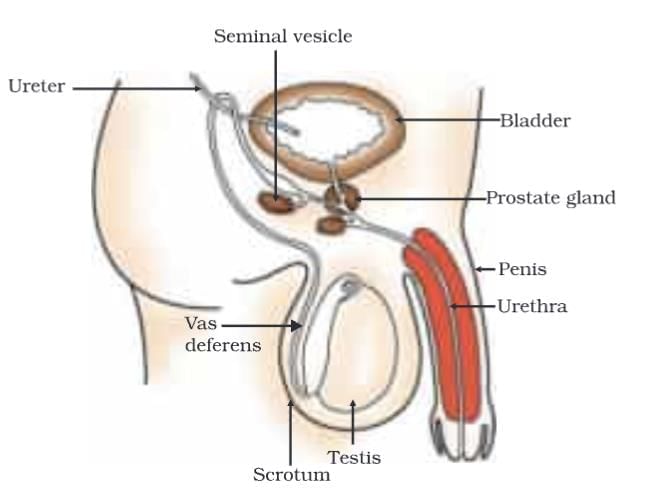
Female Reproductive System
Ovaries: Produce eggs, secrete hormones (oestrogen).
Oviduct (Fallopian Tube): Transports egg to uterus.
Uterus: Site of embryo implantation; thickens monthly for pregnancy.
Vagina: Passage for sperm entry and childbirth.
Placenta: Provides nutrients (glucose, oxygen) and removes waste from embryo via mother’s blood.
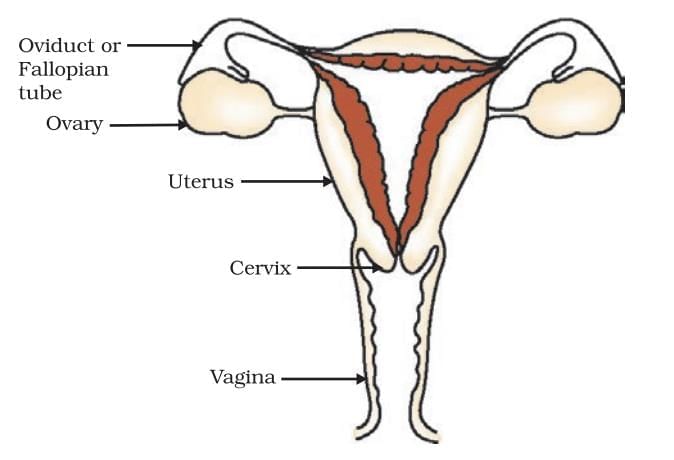
Process
Sperm enters vagina, travels to oviduct, fertilizes egg to form zygote.
Zygote divides into embryo, implants in uterus, develops into foetus (9 months).
Childbirth occurs via uterine contractions.
Menstruation: If no fertilization, uterine lining sheds as blood/mucous (2–8 days, monthly).
Sexual maturation doesn’t ensure mental/physical readiness for reproduction.
Reproductive Health
1. Sexually Transmitted Diseases (STDs)
Bacterial (gonorrhoea, syphilis), viral (warts, HIV-AIDS); condoms reduce transmission.
2. Contraception
Barrier: Condoms, vaginal coverings prevent sperm-egg meeting.
Hormonal: Oral pills alter hormone balance to prevent ovulation.
Intrauterine Devices: Copper-T, loops prevent implantation.
Surgical: Vasectomy (blocks vas deferens), tubectomy (blocks fallopian tubes).
3. Issues
- Side effects (hormonal pills, devices)
- Surgical risks
- Illegal sex-selective abortions.
|
80 videos|569 docs|80 tests
|
FAQs on Cheat Sheet: How do Organisms Reproduce - Science Class 10
| 1. Why is reproduction essential for organisms? |  |
| 2. Do organisms always create exact copies of themselves during asexual reproduction? |  |
| 3. What are the different modes of asexual reproduction? |  |
| 4. How does sexual reproduction differ from asexual reproduction? |  |
| 5. What are the key stages of sexual reproduction in flowering plants? |  |
















